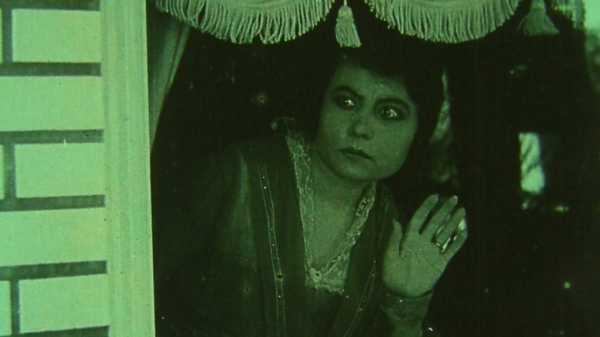
Each week, Richard Brody picks a classic film, a modern film, an independent film, a foreign film, and a documentary for online viewing.
“Margaret”
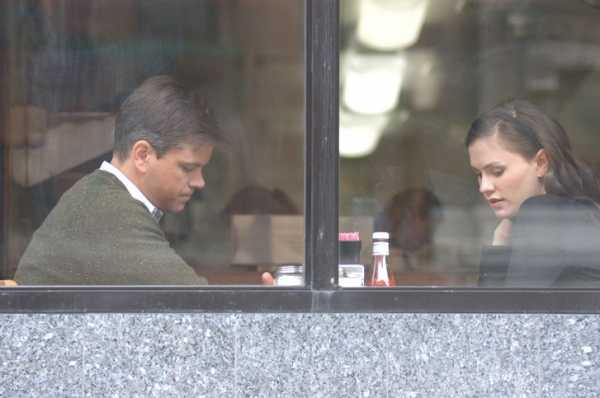
Photograph by Myles Aronowitz / Fox Searchlight / Everett
When I mentioned last
summer the
streaming availability of one of my favorite recent movies, Kenneth
Lonergan’s “Margaret,” I neglected to note a pleasant yet odd paradox of
our age of online movie-viewing: a film available to stream may well be
far more familiar and widely known than a film that has had a limited
theatrical release. That’s the case with “Margaret,” especially because
there are two versions. In September, 2011, when Lonergan’s film got its
(scant, even grudging) release in theatres, it was shown in a cut that
ran two and a half hours. In June, 2012, to coincide with its DVD
release, there was a special screening of “Margaret” in a
three-hour-and-six-minute “extended cut.” I’ve been hearing from
acquaintances that the extended version is the one that has caught on.
And this makes sense: the drama (shot in 2005) of an Upper West Side
high-school student (Anna Paquin) who’s trapped in a vortex of guilt and
a tangle of legalisms has a brilliant and inexorable swiftness in the
shorter version. Yet, in the longer version, Lonergan fills in some of
the action with dialectical wrangles between the characters. These
scenes have a majestically tense theatricality, and, at the same time,
the director transfigures aspects of the closed-door and face-to-face
drama with vast, romantic, eerie, and haunted cityscapes that raise the
action to a high symbolic pitch.
The extended cut of “Margaret” is available to stream on
Amazon,
Google
Play,
and other services.
“Idle Wives”
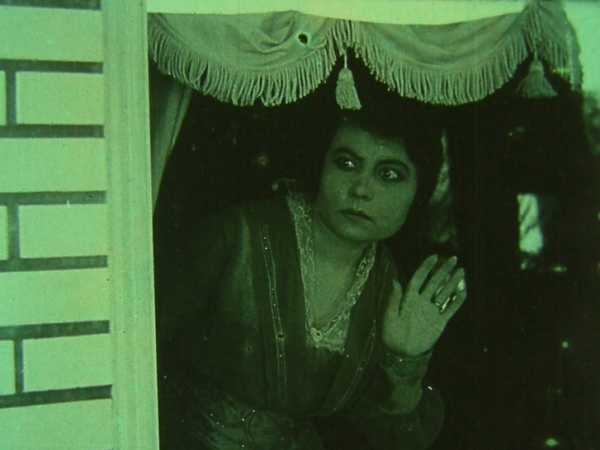
Photograph courtesy the NFPF
The rediscovery of the director Lois Weber is cause for celebration: her
films, in the nineteen-tens and twenties, are among the most original of
the times. One major find is of “Idle Wives,” from 1916, which she
co-directed with her husband, Phillips Smalley. The movie did, in its
day, get a theatrical release, but remained unseen for decades until the
first half hour of it turned up in a New Zealand archive. Weber is one
of the great documentarians among directors of dramatic fiction; there’s
a teeming, richly textured, deeply lived-in sense of tactile and social
reality in “Idle Wives.” She’s one of the filmmakers who’s most keenly
attuned to the stresses of poverty and the painful nuances of class and
economic differences, and her documentary-based sensibility is nowhere
clearer than in the film’s depiction of the newfound prominence of
movies in the cultural lives of everyday people at the time. “Idle
Wives” may offer the most detailed and specific vision of the era’s
local moviegoing habits—and it even includes, remarkably, a
film-within-a-film that the characters watch when they go to the local
theatre. The scene suggests the swift erosion of traditional mores that
results from the substance and tone of popular movies. (What’s more,
Weber and Smalley act in that film-within-a-film.) This half hour is
said to be only the first two of the original film’s seven reels;
nonetheless, it’s a treasure.
“Idle Wives” is available to stream at the National Film Preservation
Foundation.
“All the Light in the Sky”

Photograph from Factory 25 / Everett
The prolific and calmly audacious Joe Swanberg is as original and
creative a cinematographer as he is a director. In recent years, he’s
been delegating the cinematography of his films, but the last one on
which he did his own camera work, “All the Light in the Sky,” from 2012,
is as much of a feast of textured and luminous visual sensibillty as it
is of imaginative performances and dramatic grace. It’s all the more
dismaying that it hardly got a theatrical release—it came out, in late
2013, on video-on-demand, followed, a few weeks later, with a weeklong
run in a single venue. It features Jane Adams (who co-wrote the film
with Swanberg) as Marie, an actress on the Pacific coast near Malibu who
awaits the visit of her twenty-five-year-old niece, Faye (Sophia Takal),
who’s also an actress. Marie, no longer an ingénue, is having trouble
getting acting jobs, and she takes a job with an engineer who’s involved
in solar research; meanwhile, she sees a version of her earlier self on
the way not quite up reflected in Faye’s career quest. At the nexus of
science and art, nature and culture, family and friends and lovers,
Swanberg and Adams embrace a wide span of passionate experience in a
freewheeling, spontaneous, yet poised and generous drama.
“All the Light in the Sky” is available to stream on
Amazon and Kanopy.
“HaHaHa”
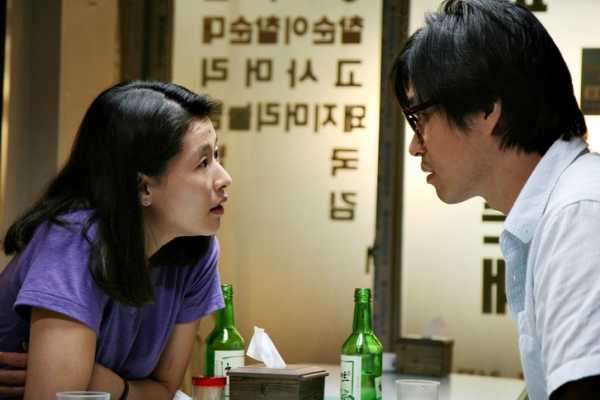
Photograph from Everett
Hong Sang-soo is among the most inventive and self-scourging filmmakers
of the twenty-first century. In recent years, he has also become one of
the most imaginative screenplay constructors, with a sly sense of
dramatic intricacies that are belied by the comedically deceptive
simplicity of his direction. His 2010 drama “HaHaHa” got one screening
at Museum of the Moving Image and was never theatrically released; it’s
among his most ambitious and accomplished films to date. Like many of
Hong’s films, “HaHaHa” is centered on the world of filmmaking and the
character of a male filmmaker; it’s a story of romance told in
flashbacks—in double flashbacks, those of the filmmaker and of his
friend, who are reminiscing while deep in their cups. The action is
punctuated by still photographs, the drama is parsed by duelling
voice-overs and brisk zooms, and the story covers a wide spectrum of
landscapes, activities, and characters. Its teeming, overwhelming
breadth of narrative complications has proved productive—the movie has
sparked his subsequent decade of amazingly prolific, ever more brazenly
and crisply intricate storytelling.
“HaHaHa” is available to stream on
Amazon.
“The Battle of Michigan Avenue”
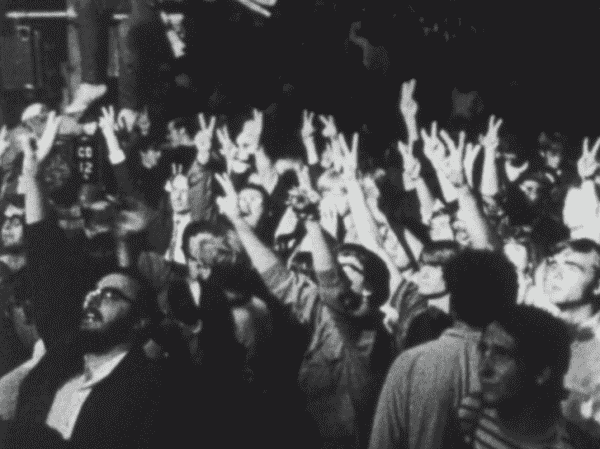
Photograph courtesy Chicago Film Archives
The story of the making of “The Battle of Michigan Avenue,” from 1969,
is integral to its very existence. During the 1968 Democratic National
Convention, in Chicago, Mike Gray and other members of a TV commercial
crew took a break from a shoot, went out in the street, and found
themselves in the midst of police violence being deployed against
peaceful protesters. They quickly made the documentation of the
political events in the city their prime activity—and then the group
made two epochal feature films about them, “American Revolution 2” and
“The Killing of Fred Hampton.” The short film “The Battle of Michigan
Avenue” is one of seven that they made, not for theatrical release but
for educational use in schools, under the rubric “The Urban Crisis and
the New Militants.” It’s appalling, fascinating, and instructive in
several different registers. Officers point large-calibre guns directly
at civilians, who face up to them with anger and contempt—one man even
overtly challenges the officers to shoot. Meanwhile, on the floor of the
convention, one delegate demands that, in honor of the protesters and
repudiation of the forceful response by the police, the convention be
adjourned and moved elsewhere—and a senator from Connecticut, Abraham
Ribicoff, gives a speech to nominate George McGovern and denounce the
“Gestapo tactics” in Chicago’s streets. The violence is horrifying, but
the militarization of the police appears to have been still distant, and
the level of violence, compared with responses to recent protests,
nonetheless appears relatively restrained. In eleven minutes, half a
century of changes—for the worse—in American society are sharply
encapsulated.
“The Battle of Michigan Avenue” is available to stream at the National
Film Preservation
Foundation.
Sourse: newyorker.com






